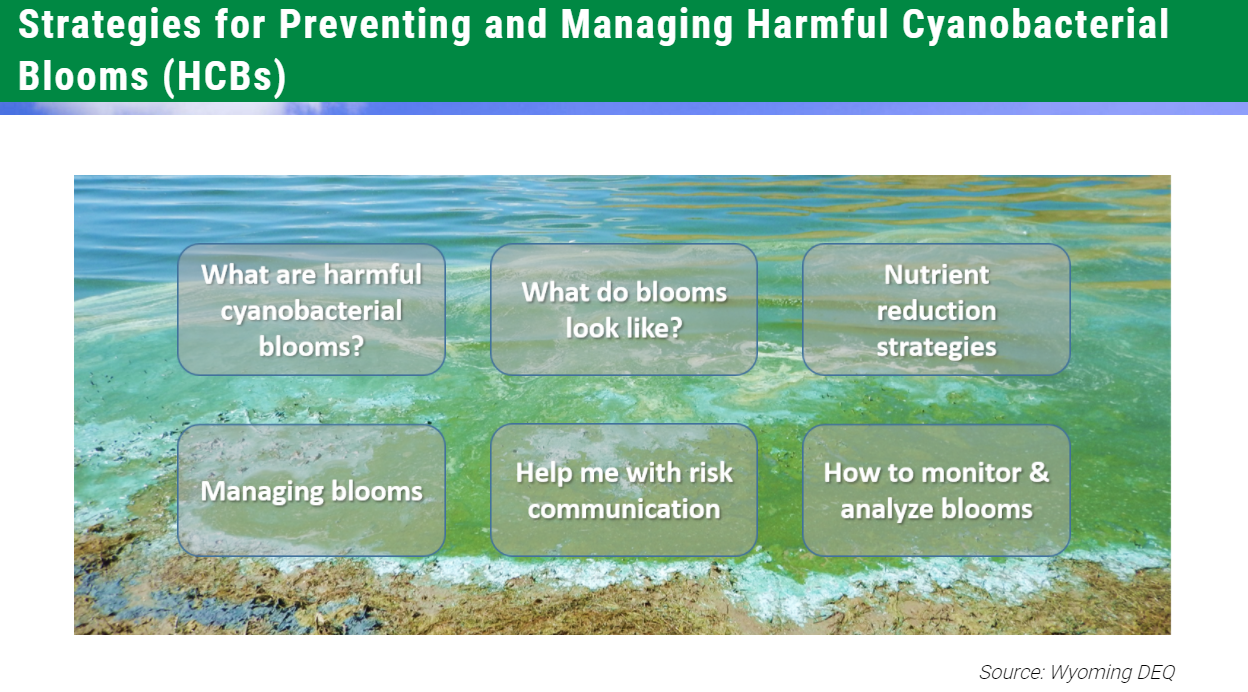
The Interstate Technology and Regulatory Council (ITRC) in collaboration with the Lake Champlain Basin Program (LCBP), a NEIWPCC program partner, have developed new educational and technical materials to help lake managers, health professionals, and others interested in cyanobacteria response, identify and manage cyanobacteria blooms in the Lake Champlain watershed. The team created the new tools in support of the LCBP Opportunities for Action’s clean water priorities.
NEIWPCC and LCBP have supported cyanobacteria response efforts across the Northeast for more than 20 years. In support of this work, the ITRC Harmful Cyanobacterial Blooms (HCBs) team was tasked with compiling information and developing guidance on in-lake management approaches for HCBs into a single resource page for easy reference on their website. The “Strategies for Preventing and Managing Harmful Cyanobacteria Blooms” webpage includes information about what blooms look like and how to manage them, nutrient reduction strategies, risk communication strategies, and more. Two interactive tools help readers evaluate which management tools or monitoring approaches might be suitable for their needs.
The team also produced an interactive video guide, “Learn to Identify Cyanobacteria Blooms,” which shares techniques for field evaluation of potential cyanobacteria blooms when on the water, without the support of a microscope or other technology. Experienced field biologists take the viewer along as they visit waterbodies in Michigan, Utah, and Vermont to check the water and shoreline for possible HCBs. Through a detailed account of what they see, the experts point out visual cues that are helpful in recognizing potential HCBs and distinguishing them from non-HCB phenomena. The video equips its viewers with the information needed to visually assess if the water is safe, which is of particular use for aquatic resource managers, LCBP volunteers and interns who are frequently on the water, as well as municipalities and others less familiar with cyanobacteria across the country.